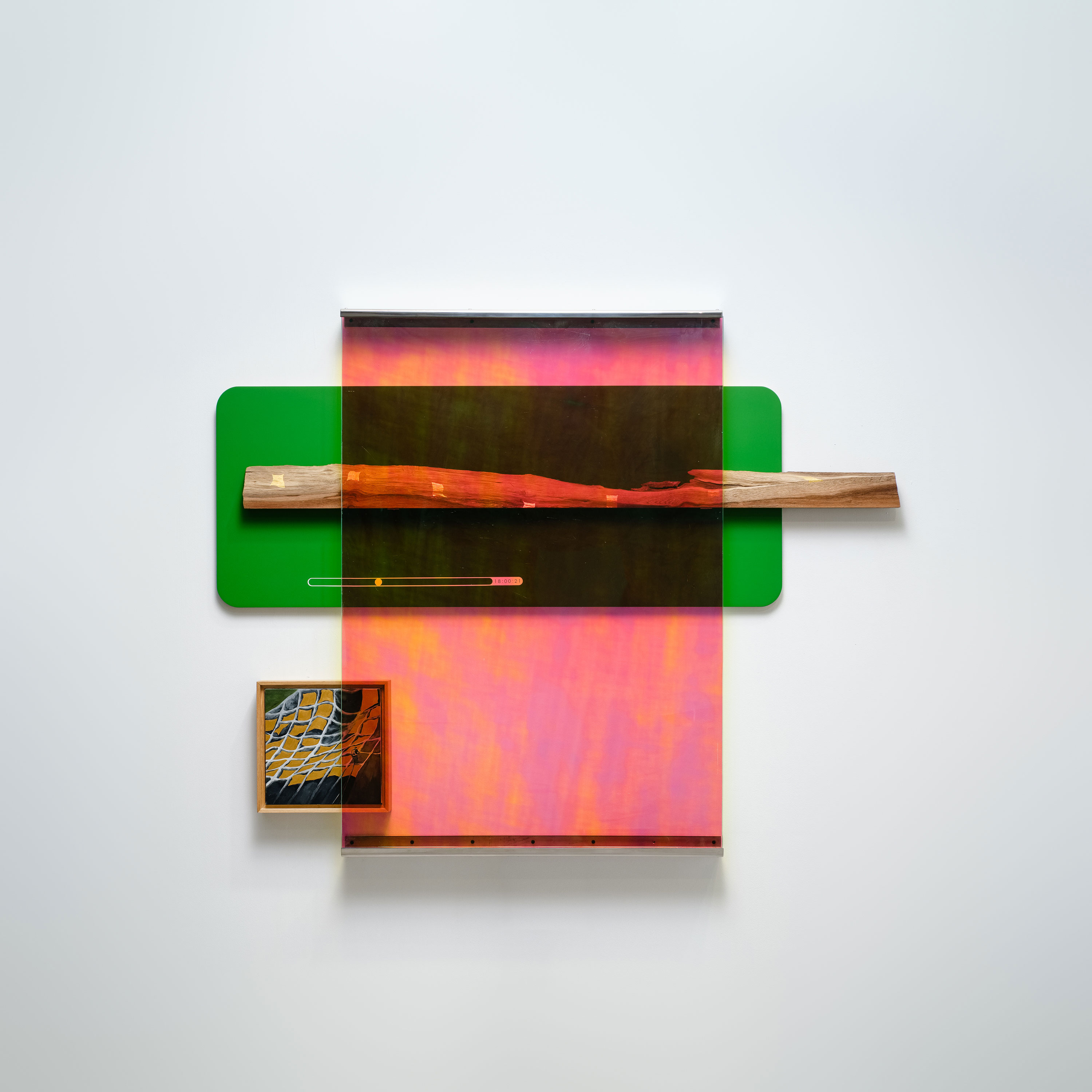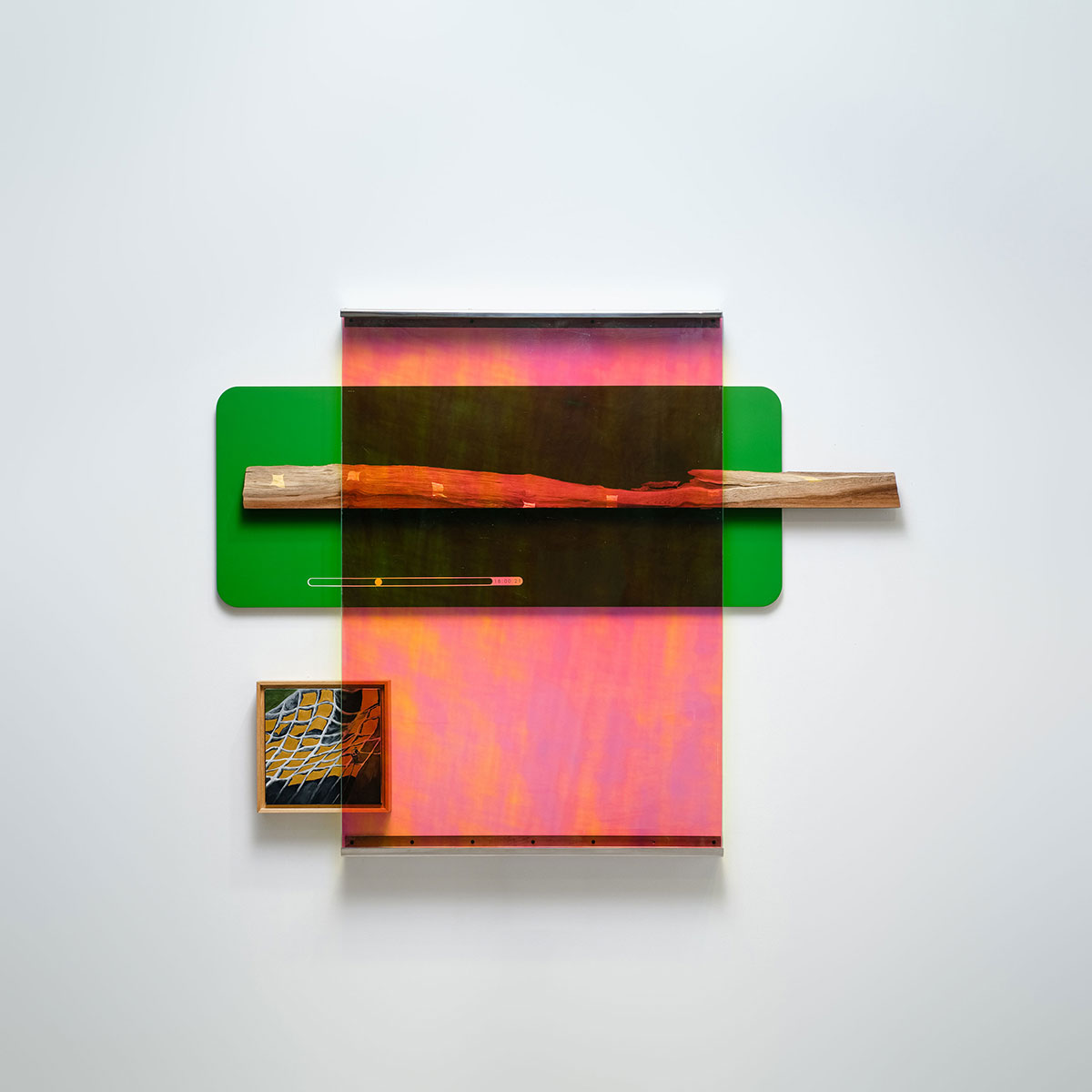CHOU Tai-Chun

Reverse Growth · Farewell · Voyagers
- 2020, wood panel, cypress, glass films, tempered glass, acrylic on canvas, 116 × 150 × 7.5 cm.
- Courtesy of the artist.
Curatorial Perspective
The research axes of Chou Tai-Chun’s works are Taiwan’s history and environmental issues. Through collages that include images from different time periods and places, he superimposes existing/non-existing landscapes, comparing the viewing paths of quasi-modern digital layers and presenting the methodology used for exhibiting paintings today. His work demonstrates an idiosyncratic visual experience emblematic of his generation. Transforming two-dimensional paintings into painting installations, and from collages to the latest environmental installations, Chou’s work exudes a detached aesthetic. However, the stories conveyed by his work are disasters and traumas suffered by the land of Taiwan and the indigenous peoples inhabiting this island over centuries of time. The artist utilizes the approach of technological image collage to interlace different image technologies in his works, especially images rendered by digital technologies. Through layered frames, the monochromatic blocks abruptly appeared in the images, the horizontal color blocks signifying fluidity, and the scenes of forest fires, collectively produce geographic landscapes with varied historical depths. We are thus reminded of the concept of bricolage put forth by Claude Levi-Strauss: the blocked images and the landscapes epitomizing history are transformed into an experiment of the painting language through the contemporary technological atmosphere. Like reassembling cars, his work expresses the influence of technics on imagination. He deals with perspectives on the history of this island, as well as the transformation of messaging regarding the application of modern engineering methods to slope management. Many image technologies therein reference the working of modernity, its power on colonial governance, and how it shapes the land and life. From this perspective, Chou’s work can be viewed as a modern mythology.
Creation Description
The research axes of Chou Tai-Chun’s works are Taiwan’s history and environmental issues. Through collages that include images from different time periods and places, he superimposes existing/non-existing landscapes, comparing the viewing paths of quasi-modern digital layers and presenting the methodology used for exhibiting paintings today. This group of works is used to describe how Chou looks at this island’s history and its connections, by continuously piecing together and imagining. They are not only retrospectives on maps, industries, and landforms, but also constructions of the artist’s spirit. He deals with several topics here: perspectives on the history of this island, how the indigenous Gangkou Community in Hualien County has regained its lost land over the past 30 years, and the transformation of messaging regarding the application of modern engineering methods to slope management. No matter where we are or where we are facing, the construction of island cities is a complex and intricate political process. Rulers in different periods have had motives and means for demarcating boundaries. It seems that a path emerges from events in different domains, in an attempt to shuttle along different time axes and compare the awareness of land-related problems in the past and present.

